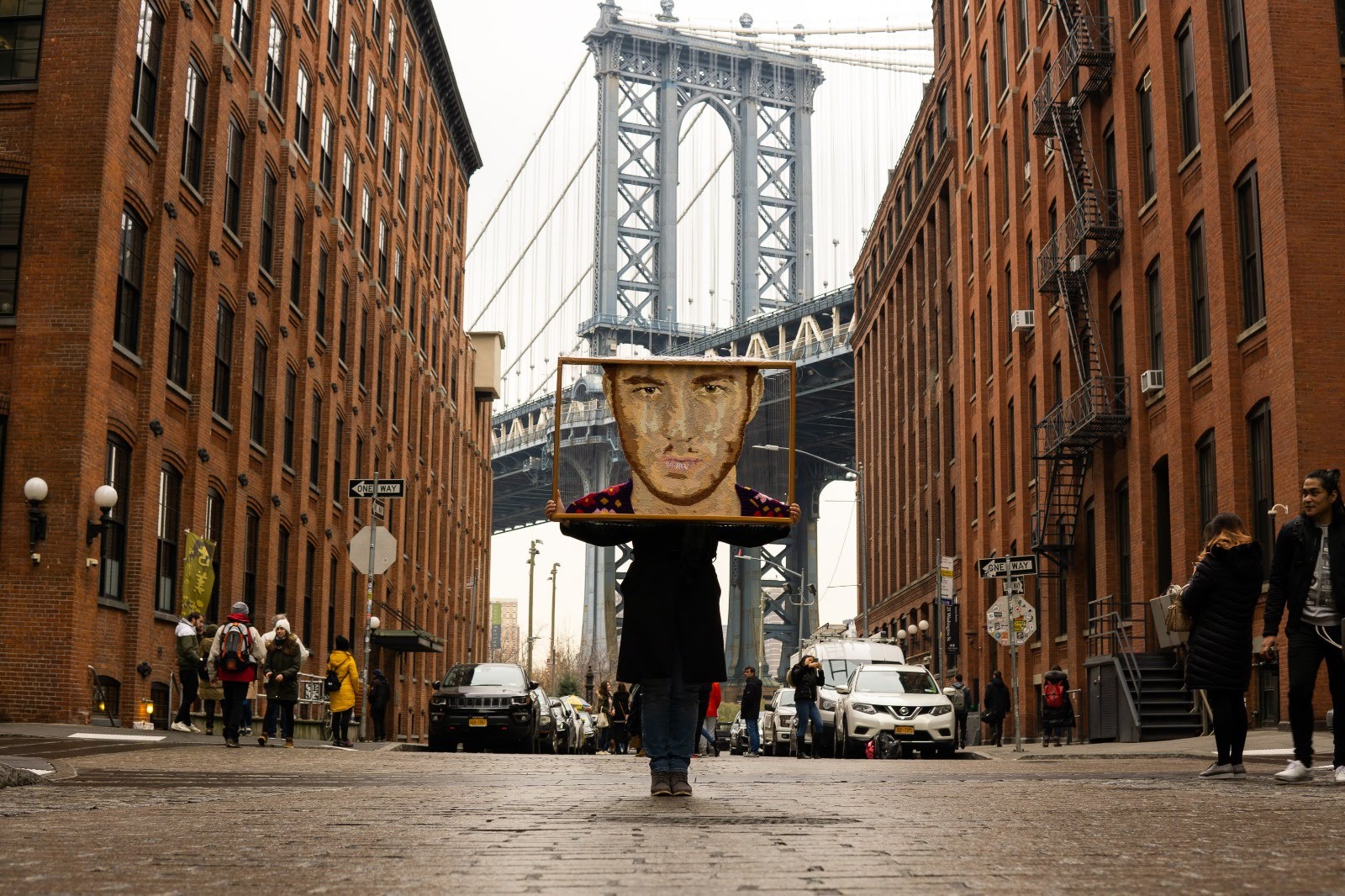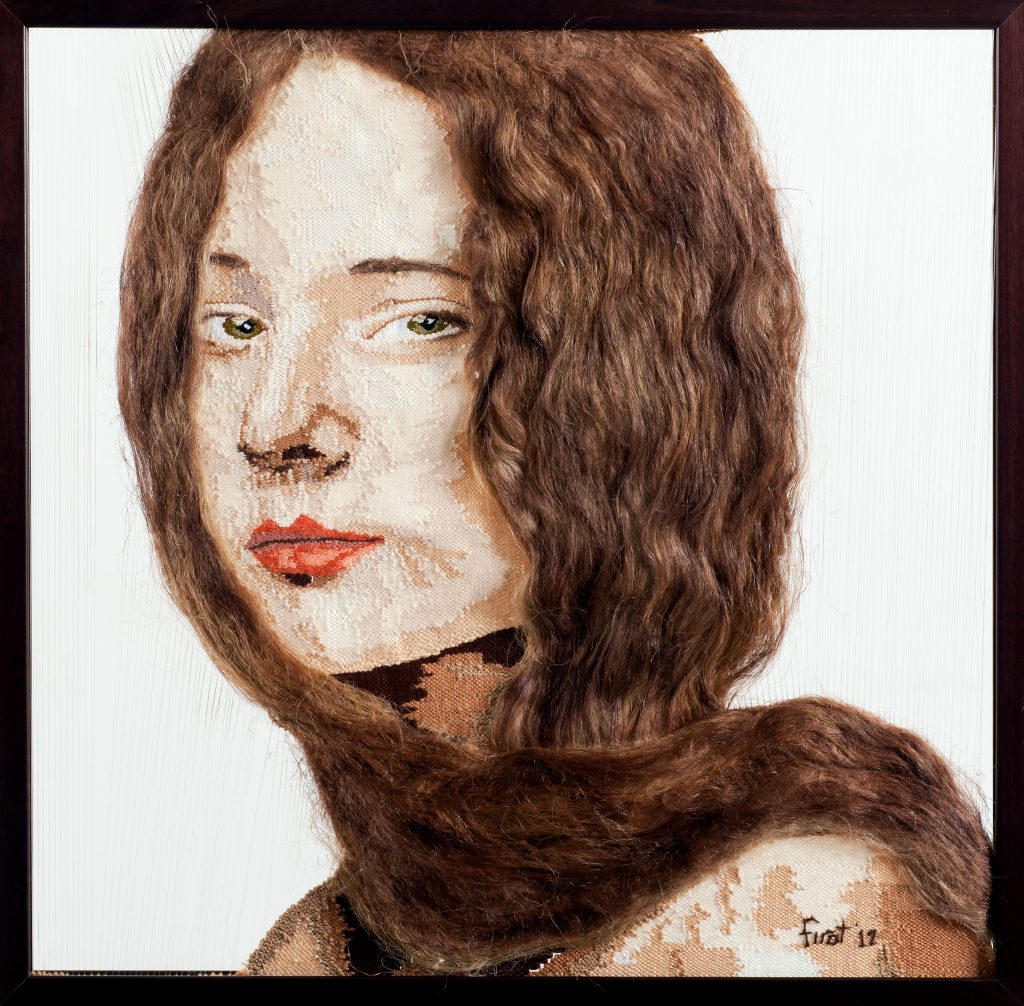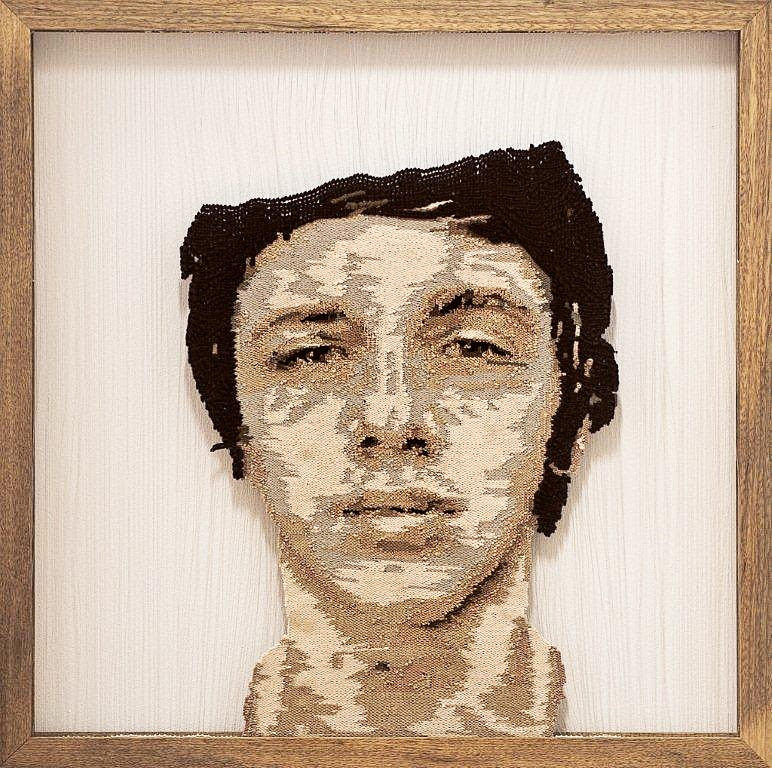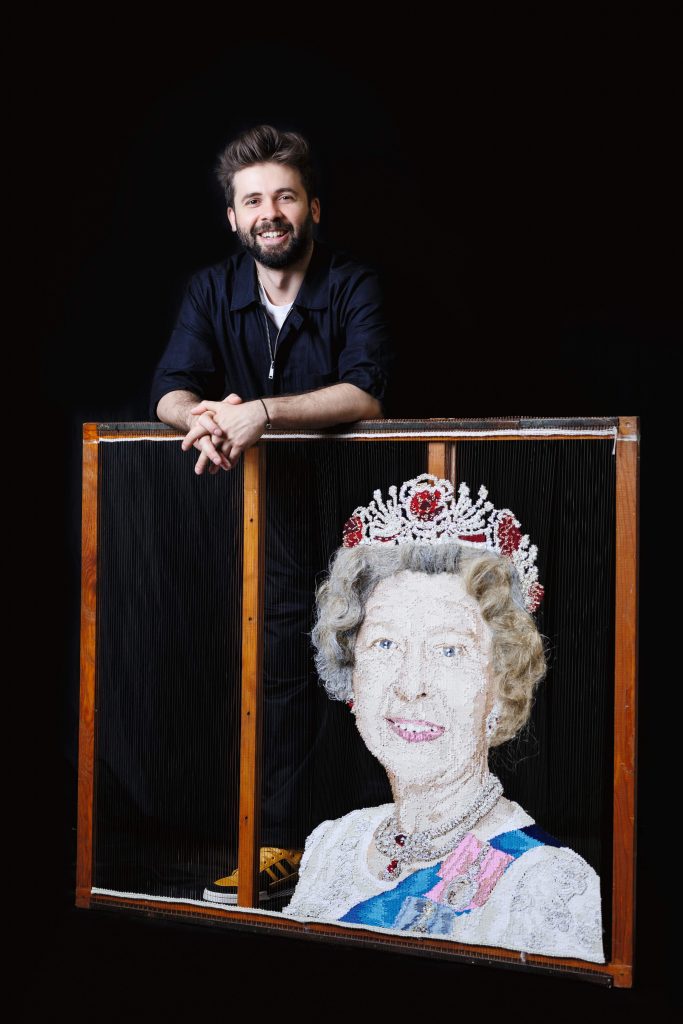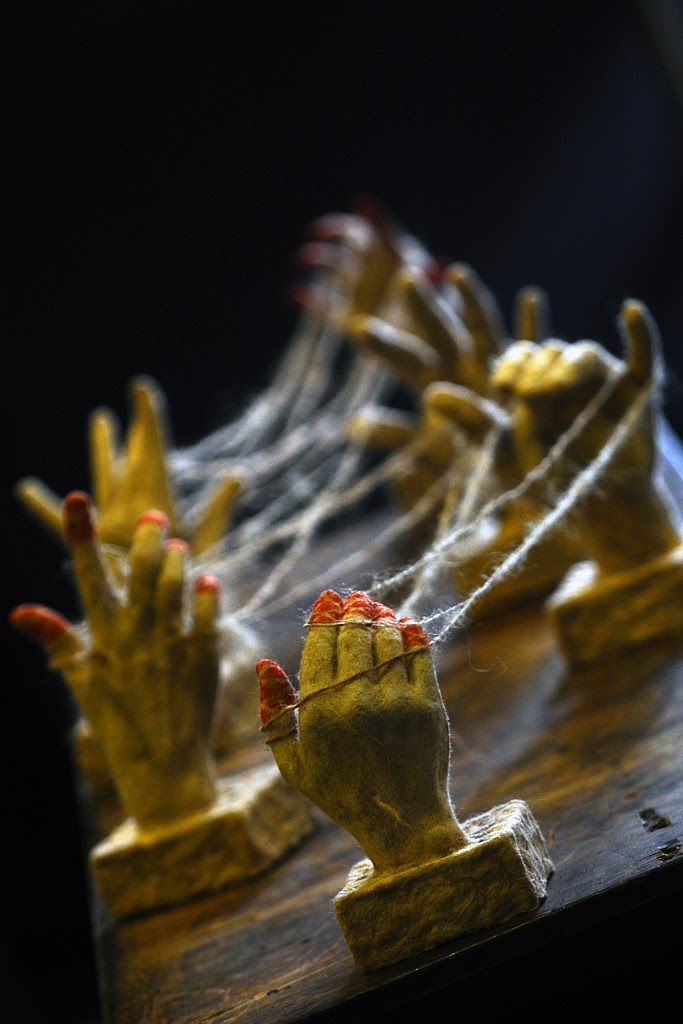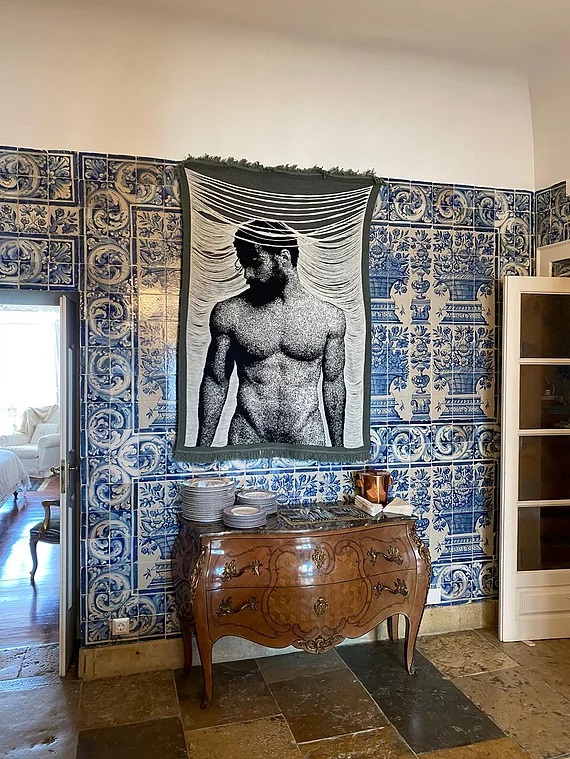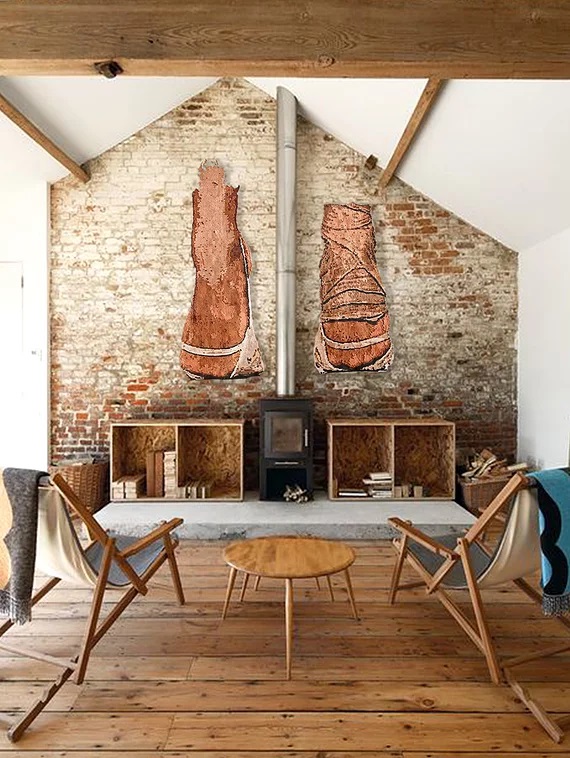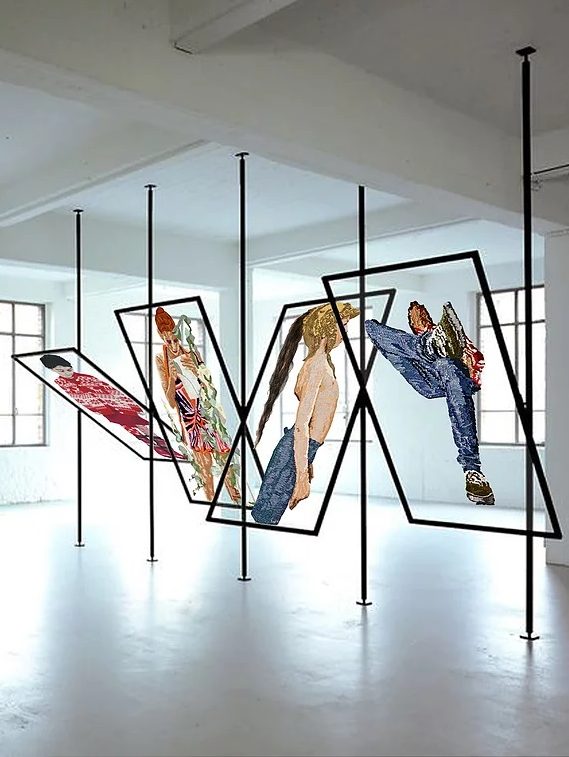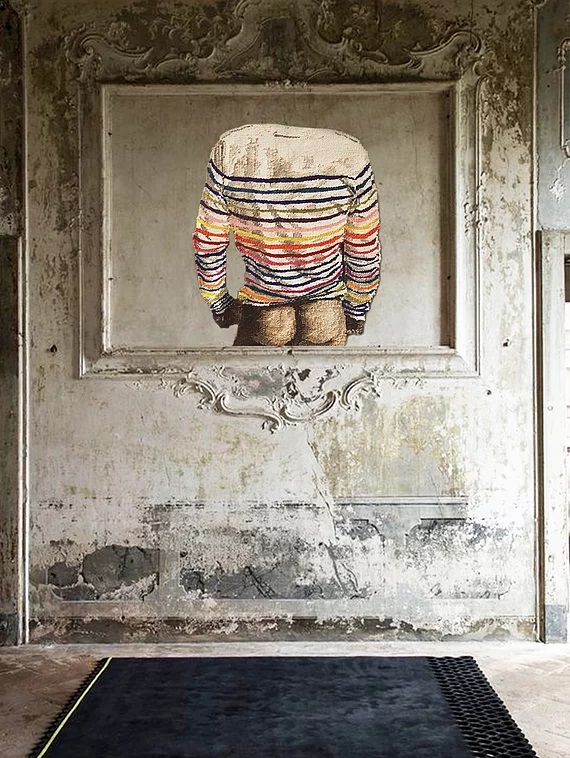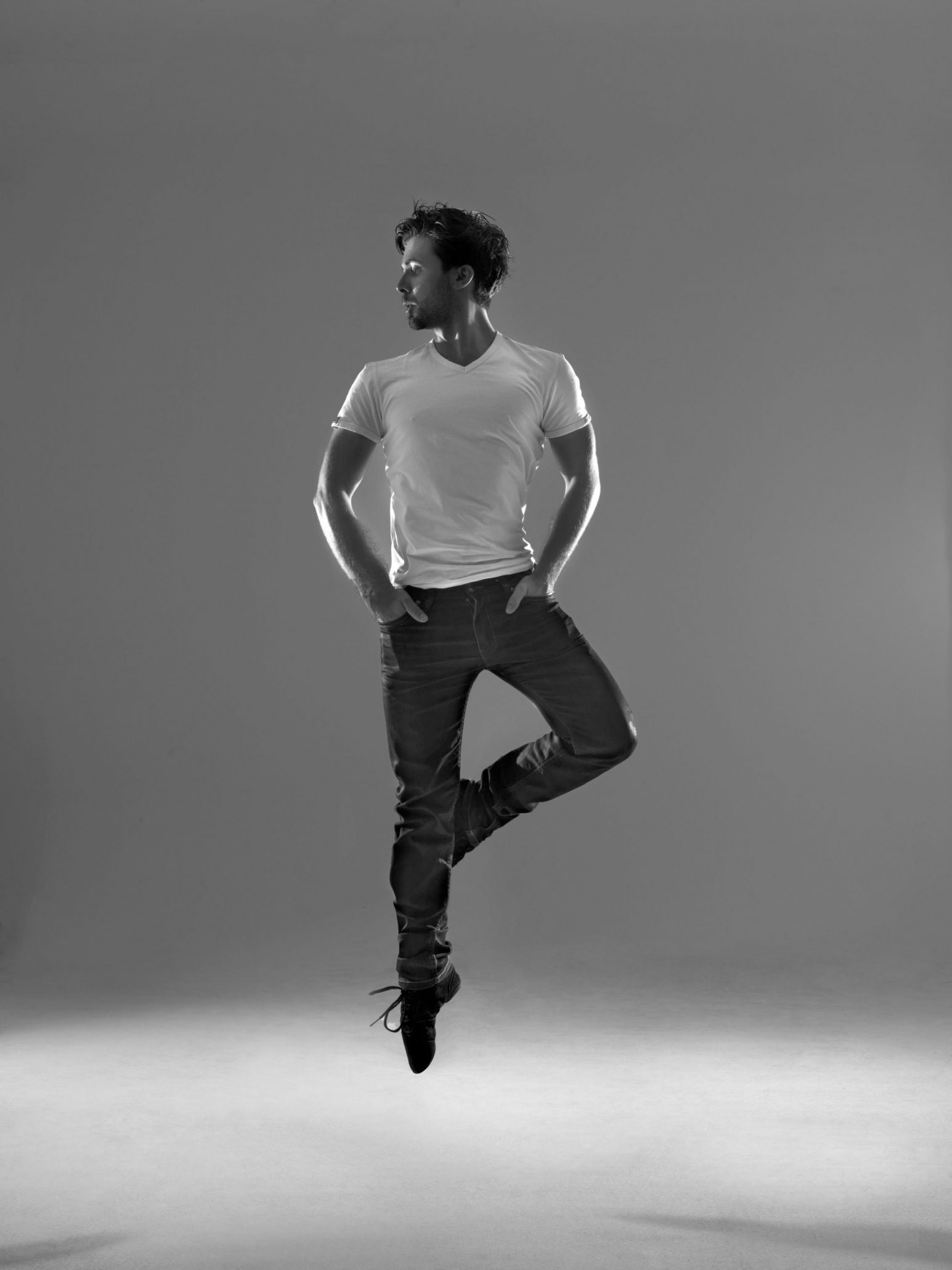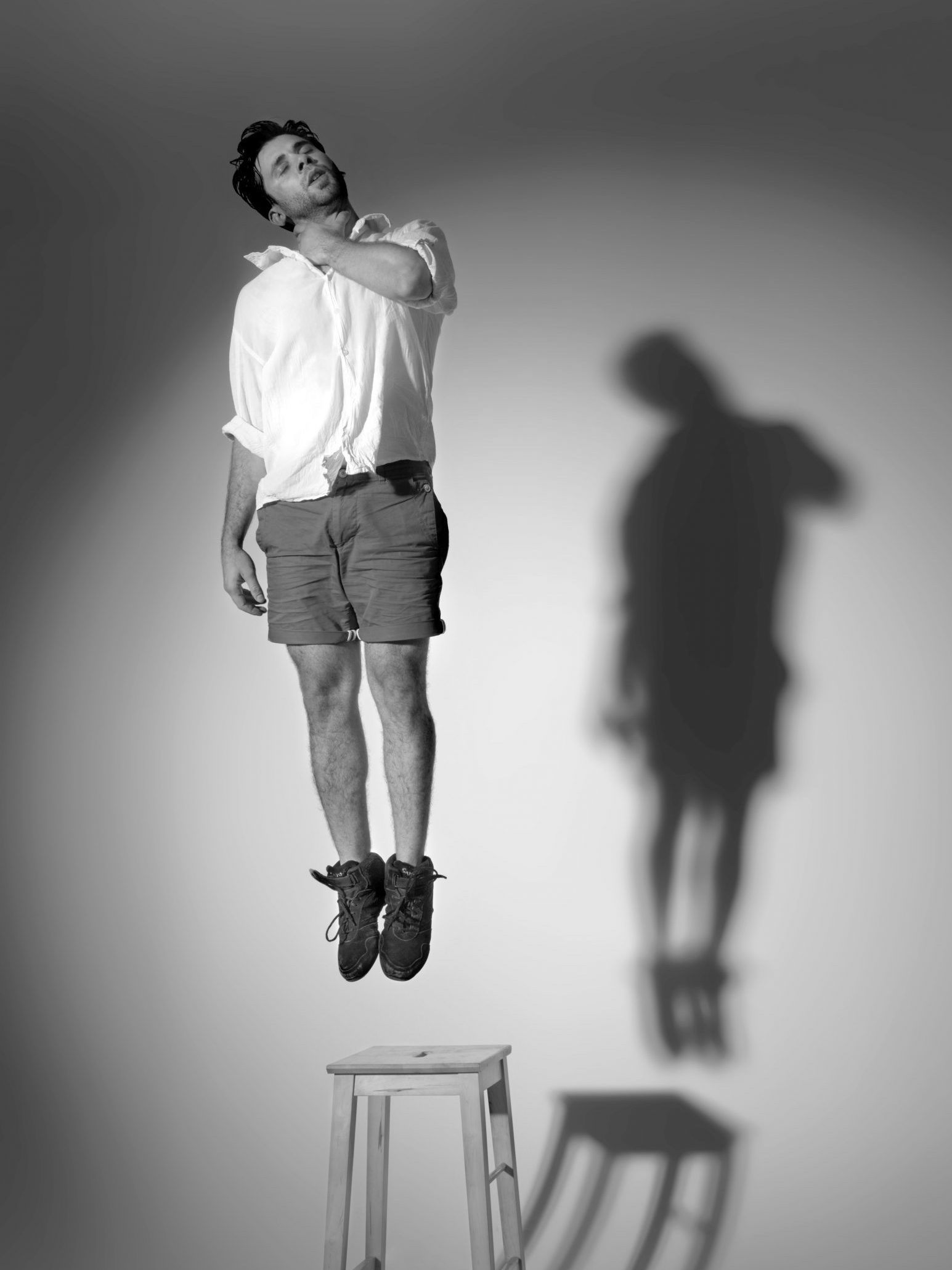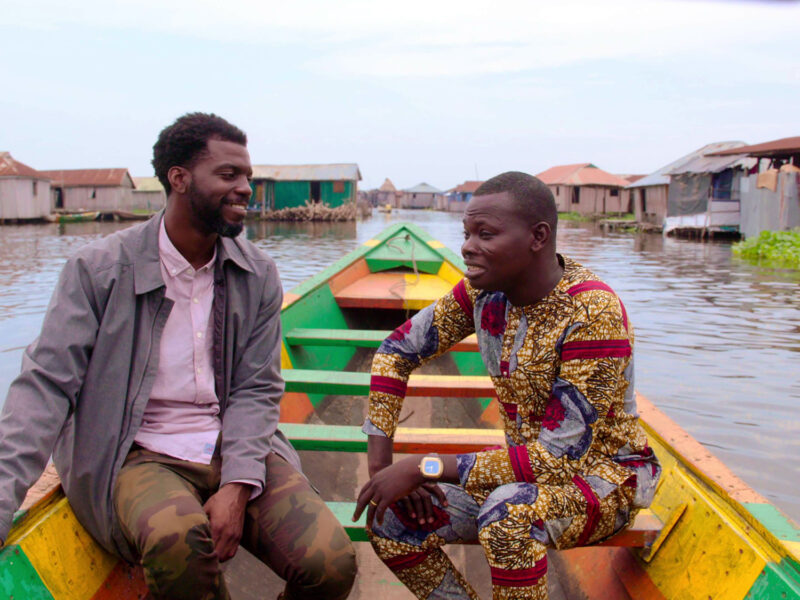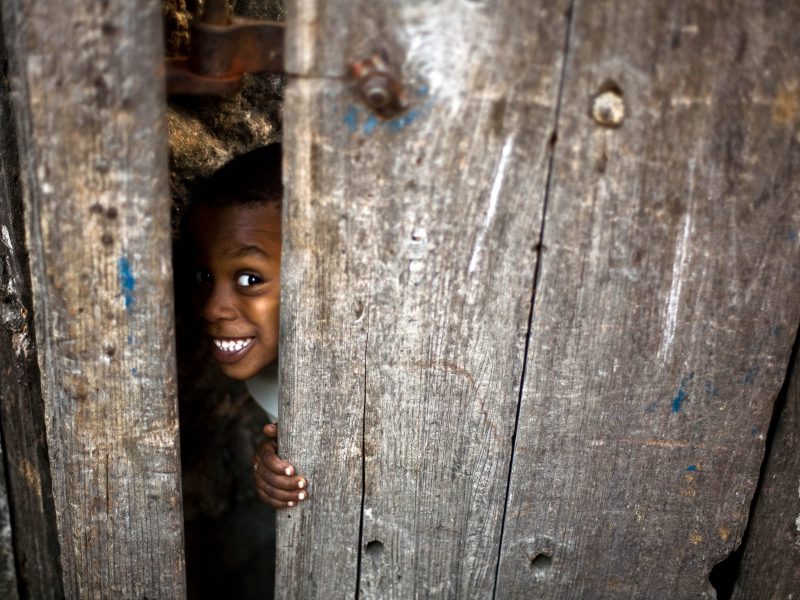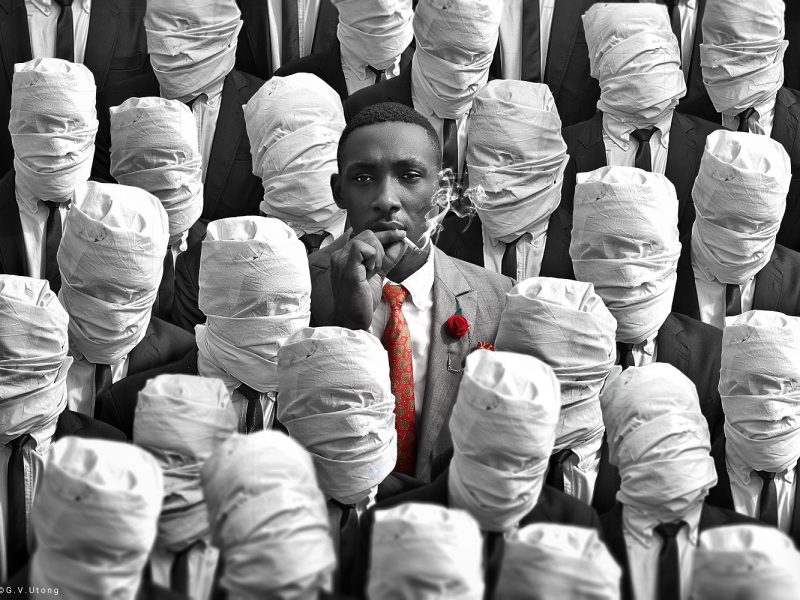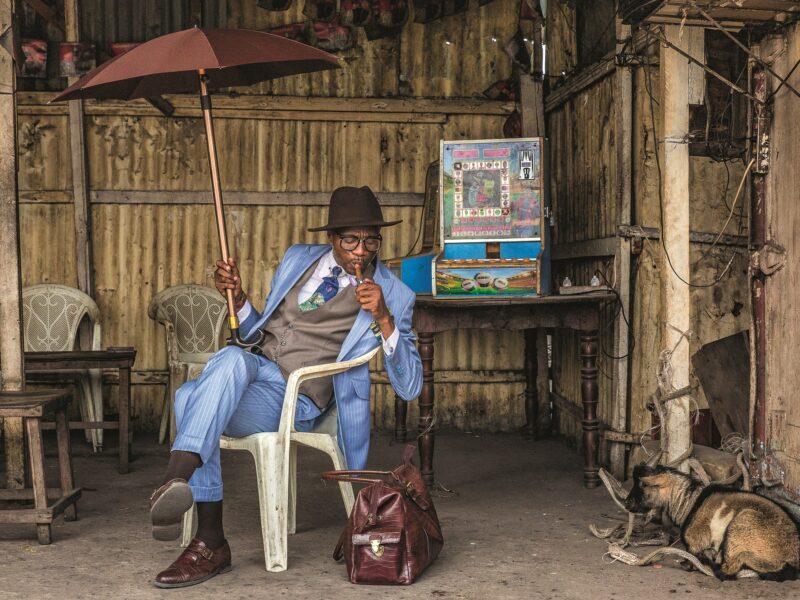Fırat Neziroglu: New Horizons in Fiber Art
Fırat Neziroğlu has taken fiber art to a whole new level with his powerful portraits gazing at us from his weaved pictures. The artist talks about the inspiration he gets from the ancient cultures of Anatolia* for his art and fashion designs.
When I first saw one of your magnificent pieces of weaving art, I thought: But this is madness! Couldn’t you take an easier path?
(Laughs) Weaving is something embedded so deep inside us. When the first human settlements were established, there were three houses in them: Bread house, ceramic house and weaving house. Without these three, humanity would not be able to settle. Such an ancient culture evokes a lot of feelings. I don’t know if I would have a chance to be noticed as a painter, among so many great painters. But as a weaver, I could convey valuable knowledge inherited from our ancestors.
People cannot stay indifferent to your work. Their heads turn immediately!
Yes, the transformation of something that we use daily since antiquity into a piece of art often surprises people. It also prompts people to touch the artwork. Wool is just like our hair -made of keratin. This inevitably makes us feel attracted to it. I always let people touch my works.
“My friends always send me the remaining yarns. If someone knits a sweater and there are any leftovers, I get them. There are also a few textile factories that send their excessive yarn to me, and that’s very kind of them!”
Can your work be described as “fiber art”?
Yes. There are so many artists in the world dealing with fiber art. Suhandan Özay Demirkan has introduced the term “fiber art” to Turkish academia. She came back to Turkey, after studying weaving art in Vienna. Now, several professors in the textile departments of various universities have also started to make fiber art. Fiber art is carried out either by applying textile techniques with different materials or by applying the textile materials with different techniques. This includes felt, lace, applique, embroidery, patching, weaving, knitting, crochet, and the like… There are women in the U.S. who become “artists” by hanging just a small pattern of the intricate lacework that our mothers usually make to cover TV sets. Think about the cultural wealth of our land!
Here, Belkıs Balpınar should also be mentioned. She makes contemporary interpretations of Anatolian rugs. She draws patterns, and makes them weaved by women in villages. There aren’t many people as good as her at this.
I also entered the fiber art literature by adding space, light and shadow to the weaving. It is lectured as a distinct technique at the textile departments of many universities in Europe and the U.S. Textile societies in Canada organize workshops for “weaving like Fırat Neziroğlu” and contact me from time to time. I have a world-renowned weaving technique and even a thesis has been written about it.
YOU HAVE GOT A CALL FROM THE QUEEN!
What exactly do you mean when you say “adding space, light and shadow”? Don’t you weave the entire surface?
Exactly! In my work, I only weave the areas where the portrait is, by tying little knots on the edges in a special way that I have discovered. I use fishing lines to create space or the feeling of emptiness. Since fishing lines show the backside, the person passing behind also accompanies the picture. When you put the piece in front of a window, the landscape behind it becomes part of the weaved picture too. Sometimes I weave the base and leave the areas defining the portrait empty -like positive and negative parts on a film. By spotting light from one side, I can create a shadow portrait on the wall.
How long does it take you to create a piece?
I usually shoot timelapse videos as I work. I put the camera, and it tells me how long it takes. A work measuring 1 meter by 1 meter would take 580-600 hours to complete, on average. I weave in a very old-fashioned way. Consider a square frame. There are notches on the frame and I pass the ropes through them one by one. For a job of this size, I lay about 2,000 lines. I weave between those strands, one by one, lifting up and down with my hands.
So, you don’t have any apprentices… Sculptor Rodin, for example, would have dozens of apprentices!
I always say that: When you go to listen to a pianist, his/her assistant does not press the keys of the piano. If I make an image on photoshop, print it and hand it over to my apprentices, all the charm would be gone!
What type of yarn do you use for your weavings? Are you chasing any special material?
First, there is the fishing line. I always visit fishermen to get fishing lines and I have a pleasant interaction with them. I respect nature and do not want to pollute or destroy anything. My friends always send me the remaining yarns. If someone knits a sweater and there are any leftovers, I get them. There are also a few textile factories that send their excessive yarn to me, and that’s very kind of them! You know that the bobbins used in weaving mills are thrown away when the thread on them gets short to do anything. So, I play with these remnants but never buy new material. I paint these threads; add them up and twist them; or separate them to get thinner fibers.
“Angora (Ankara) goats are no longer bred in Turkey, but in New Zealand! Did you know that the main material of NASA’s spacesuits is the wool of Angora goats? This makes me crazy!”
When you combine craftsmanship and art, you create unique works that people cannot stay indifferent to. Is that the reason why Queen Elizabeth II and the Queen Sirikit of Thailand have found you? How did they reach you? One day, did you get a phone call from the queen’s butler?
Yeah, I had a phone call! Their publicity offices have contacted me. In the past, they used to cover the walls of large castles, towers and cathedrals with tapestries to keep the heat inside. They were used as insulation material. As these people had a refined taste, some pictures or scenes have started to be woven on these tapestries. Therefore, the tradition of woven pictures emerged. In the past, there were many of these weavers. After the industrial revolution, when everything was mechanized, they gradually disappeared. Right now, I can tell you that there is nobody in the world, who can weave more realistic images than me. That’s why they find me.
They called you to ask for what?
I was invited to Thailand for the birthday celebrations of Queen Sirikit. First, they showed me around Thailand. We visited some weavers’ villages and I saw that the Queen has a textile policy! Everything in the country is woven in an old-school way, only as much as needed. Then I weaved a piece of fabric for the Queen. As you know, Thai temples are covered with gold and it is difficult to see the contours of buildings when the sun shines. One night, I noticed that the silhouettes of temples looked so clear and amazing in the moonlight. So I weaved a portrait of the Queen with gold, silver and copper threads and put a temple behind her. Looked at daylight, it was difficult to see anything, as the gold, silver, copper hues were all mixed up. But when you looked at it in dim light, the Queen and the temple loomed. Normally, I have a European style of sketching things, as I use perspective, light and shadow. These are the foundations of contemporary Western painting. In the East, another mindset works. There is something called “miniature”. If I weaved a portrait of European style, it would be culturally disrespectful. So I chose to perform within the limits of Asian style.
‘FIRAT NEZİROĞLU MAN’ RESEMBLES THE ELDERLY ANATOLIAN GUYS
Have you studied textile design? Or did teach yourself?
I studied Textile and Fashion Design at the Fine Arts Faculty of 9 Eylül University in İzmir. Two days a week, I used to study figure drawing with real models from morning till night. So I learned light and shadow, as well as anatomy. I am an old-school fine arts graduate. We used to work with naked models, but now you can’t! These schools have now been transformed into the Faculty of Art and Design and drawing with models is omitted.
Students will no more be able to draw human anatomy, then!
Yes, it is very upsetting! Knowing the human being is essential, as we do this job for people, after all.
Do you have a fashion line as well?
Yes, I have a brand called FN. I make menswear collections every year. I just took a break last year, because of the pandemic. I had done a fashion show at New York Fashion Week the year before. While I was preparing to attend the event again in 2020, everything came to a halt. Now I am flirting again with Paris and New York Fashion Weeks, but we still do not know when things will improve… Apart from that, I also prepare collections on commission from private textile companies.
It is a classical question, but let me ask this: What is “Fırat Neziroğlu man” like?
He is a true Anatolian grandfather! They have such beautiful ways and habits. In your clothes, the armpits are stained and worn out due to the friction, in time. Then, you would need to replace the whole piece of cloth. In Anatolia, on the other hand, there is a lack of everything. But lacking could also be an advantage, as it forces you to invent things! Anatolian people (i.e. our grandmothers) add a triangular piece of fabric under the armpits of clothes. They call it “kuş” (bird). That triangular piece requires less fabric during the molding. It can easily be replaced, when the armpit is worn out. I usually get back to Anatolian culture to find such good solutions. Then I apply them on fabric, and walk around wearing them. I also realized that the armpits sweat even less this way, as that piece of fabric also acts as bellows. That’s why, you would see those “birds” on jackets, shirts and t-shirts of all my collections.
I also get inspiration from the vestments of elderly men in Anatolia. Those are incredibly ergonomic; they have amazing features in terms of air permeability. I have even developed some formulas based on them. One day, I saw an elder guy, while I was wandering around Çankırı. I realized that there were only two holes tied up with drawstrings on his jacket, instead of buttons. “Uncle, what have you done?” I asked. “Oh boy,” he said, “That’s poverty, you know… I could not find buttons. So my wife fixed it that way!” Now I use those drawstrings in all my jackets too.
WHAT TO LEARN FROM TRADITIONAL TURKISH TEXTILES
Do you also get any inspiration from traditional Turkish textiles? There is very special stuff like the natural, handwoven textiles of Şile and Buldan, or more refined fabrics like “kutnu” from the city of Gaziantep.
I have an outfit made of kutnu on me now! I weaved it myself in Gaziantep and I am currently talking to you from the town of Şile! We have installed around 100 weaving looms as part of a municipality project here. Around 200 local women will be employed at each loom and I am teaching them how to loom. Şile cloth is an important asset for us, as it also has geographical indication. We would like to ensure that it continues to be woven in the traditional way. There are many imitations around. Şile cloth should be washed in the waters of the Black Sea and dried on its fine sand to get its special texture. There is a huge difference between the fabric you wash in the fountain and the one you wash in the sea!
I have been traveling around Anatolia for more than twenty years, stopping by to weave traditional fabrics whenever I can. I have been teaching at the university for years. I think, I might have a say in this matter. The cloth is the main element of fashion design, but there are many fashion designers around who don’t know how to use it well! (I don’t say a word for those who are proficient at this). For example, there are attempts to modernize kutnu cloth. They changed its fabric, its yarn, and all up to a point it is not “kutnu” anymore! If you loom Şile cloth slightly in a different way, you would get Buldan cloth. When people make design without having a good grasp of this land, steam comes out of my ears! Ornament is something and design is another. One day somebody told me that they would like to make Şile cloth thicker, as it is too thin and shows the interior. If I change the thickness of its fabric, it will no longer be a Şile cloth! So I found the solution out of this puzzle, by weaving two sheets of Şile cloths together at the same loom. If I changed its thickness, the cloth would lose its essence.
NASA SUITS INCLUDE MOHAIR OF ANGORA GOATS
You also held an exhibition of sculptures made of felt. Do you think felt is a special material?
These lands are very strange. Once upon a time, Sumerians inhabited Mesopotamia. The felt technique should have been inherited from those ancient cultures. We usually think that the first humans were wandering around in rags, with a stick in their hand and their hair disheveled. It was not the case at all. Once I saw Neandartel-skull exhibited in Europe. There was still hair on the skull in the form of a bun, knitted with various fabrics. Ancient people knew how to use needles, yarns, and weave fabrics. They were making ornaments from seashells. So they didn’t have a shabby look. We have a bad habit in modern times. we think that the old is necessarily bad, ugly, and untidy. That’s far from the truth!
So, felt was invented in this land by the Sumerians. They used to wear fringed wool clothes and those fringes turned into dreadlocks, in humid and alkaline environments. Felt is mostly used in the shepherd’s cloaks. Now, we don’t have as many shepherds anymore! All have migrated to the big cities to work in construction. Therefore, Angora (Ankara**) goats are no longer bred in Turkey, but in New Zealand! Did you know that the main material of NASA’s spacesuits is the mohair of Angora goats? This makes me crazy! Normally, I am a happy person, but I feel obliged to say all these unpleasant things. We are losing the world and it’s better to lose the saddle than the horse.
Felt is such a beautiful material that the shepherds can lay them on the ground to have a nice sleep, while the sheep graze. Do you know why they sleep so comfortably on them? Because snakes, centipedes, scorpions, ticks, and insects do not come to the felt. Its texture makes them itch!
Wow, this is such a valuable piece of information to me!
This is ancient Anatolian wisdom… We need to pay attention to our grandparents. I had many chances to visit them and listen to their stories. While I was working on the felt exhibition, I visited the Louvre Museum. I got carried away by all those Michelangelo statues. I told to myself: “What they have done with marble, I should do with felt!” I pressed the felt well, so that I could shape it into sculptures of hands. That technique has been identified with me as well. Then the exhibition went on a world tour in 2008. Some of the works came back, and some entered permanent exhibitions of various galleries and museums.
BALLET AS A WAY OF LIFE
You also established a dance company in İzmir. Have you started dancing to balance the hours spent weaving?
My father was a football player. All his friends were ballet dancers. When we were very little, they encouraged me and my sister to dance. My sister is currently one of the top four rhythmic-gymnasts of the world. You know, our girls have lately become European champions in the group series. In the individual series, my sister still has the highest scores of Turkey. She is an exceptional kid. My family used to observe us a lot to see what talents we had. When I came to university age, they said, “You are going to study fine arts.” I said that I wanted to be a history professor. It troubled them so much that I had to say okay, in the end. I was able to raise my leg to my head, but it meant nothing at fine arts faculty. I studied for four years and stayed at the university as a research assistant. Then, I visited the Textile Department of Çukurova University in Adana for a year to prepare the basic art curriculum and got back. After I resigned from the university, I fell into a vacuum. “I should dance!”, I told to myself. I called my dance tutor Şebnem Şenel and said: “Madame, I would like to establish a dance community. Would you give your blessing?” Oh, I love getting blessings!
After I got her permission, I made an open call for people who dream of dancing. 23 people answered the call. We united voluntarily, without any financial funds. We started dancing in the hall of my house, at the gymnasium or along Bostanlı coast. In the first year, we staged The Little Prince. In the second year, with the support of the Ministry of Culture, we staged Müzeyyen -a performance narrating the life of Müzeyyen Senar.*** We continued our performances, and the crewmembers turned into real dancers. During the day, they have regular jobs. Among them are environmental engineers, high school teachers, and lawyers. They rehearse in the evenings after work. Sweethearts! Years later, we have reached a point where we danced on the same stage with the dancers of the İzmir State Opera and Ballet.
What’s next then?
My last exhibition opened in Australia, and lasted until the end of March. I would love to go there a lot, but it was not possible during the pandemic era. Now I work on a mythological character called Shahmaran**** to be exhibited in the USA. I’m preparing a small five by five-centimeter piece to be used at a show, where we will revive Shahmaran with VR technology. I can’t tell how excited I am!
To follow Fırat Neziroğlu: tr.firatneziroglu.co.uk and @firatneziroglu
* Although the term “Anatolia” (Anadolu) is used very commonly in Turkey today to signify almost everywhere to the east of Istanbul (the parts that are also known as “Little Asia”), few people know the real meaning of this name. It comes from the Greek word ἀνατολή (Anatoli) and means “the East” or “where the sun rises”-just like its counterparts “Levant” (French) and “Orient” (Latin).
** Istanbul was the capital of the Ottoman Empire for centuries; while Ankara has been the capital of the Turkish Republic since 1923.
*** Müzeyyen Senar (1933-2006) was the famous diva of Turkish classical music.
Listen to a classical piece performed by Müzeyyen Senar here:
https://www.youtube.com/watch?v=MhDlMVl9p8w
Listen to a modern, “Anatolian Rock” style version of the same song by Gaye Su Akyol here:
https://www.youtube.com/watch?v=rZcioOxKAeA
**** Shahmaran is a mythical creature, half-woman and half-snake, found in the folklore of Iran, Turkey, Armenia and Iraq. The name itself means “Queen of the Serpents” and her image still adorns the walls in some houses as a protective amulet.
 English
English




